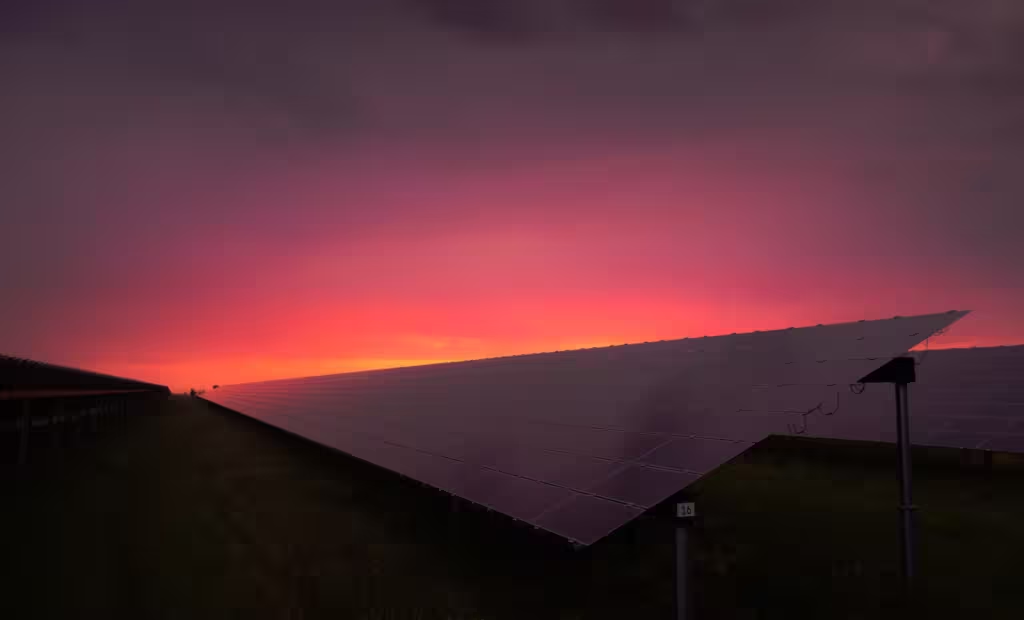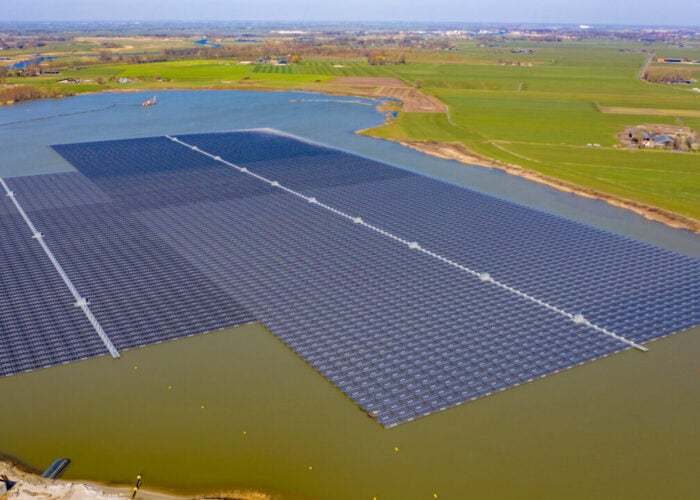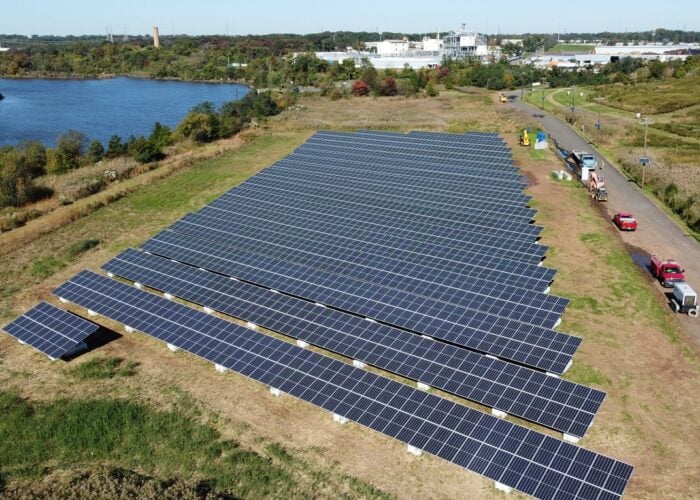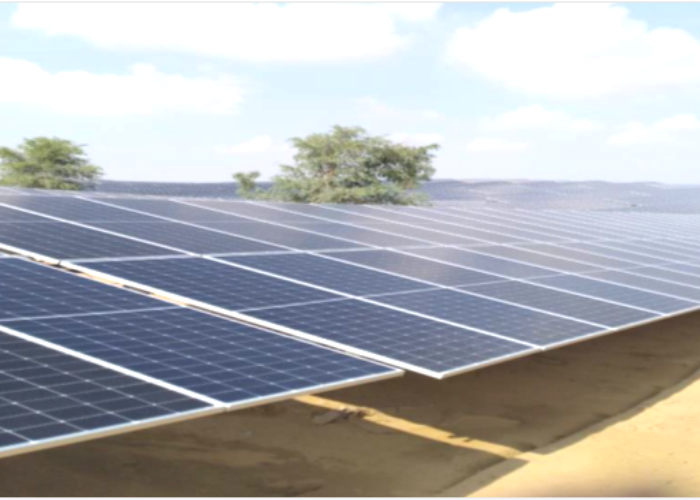
2024 will be a watershed year for the global energy transition, according to Norway-headquartered consultancy DNV.
DNV CEO Remi Erikson said in its Energy Transition Outlook 2024 report that global emissions will peak this year and that the “global energy transition”—where renewable energy begins to replace fossil fuels in absolute terms—has begun.
Unlock unlimited access for 12 whole months of distinctive global analysis
Photovoltaics International is now included.
- Regular insight and analysis of the industry’s biggest developments
- In-depth interviews with the industry’s leading figures
- Unlimited digital access to the PV Tech Power journal catalogue
- Unlimited digital access to the Photovoltaics International journal catalogue
- Access to more than 1,000 technical papers
- Discounts on Solar Media’s portfolio of events, in-person and virtual
Or continue reading this article for free
Both of these are primarily down to the development and proliferation of solar PV and battery energy storage technology, which have both emerged as key technologies in the global energy generation landscape. A report this week from the International Energy Agency (IEA) found that solar PV will account for 80% of the global power capacity additions through 2030.
However, the energy transition is increasingly competing with other global events, policy priorities and economic headwinds to retain its momentum. In the report, Erikson said: “National and economic security priorities dominate the international agenda and slow the transition.”
Finances
The report said that global economic shocks stemming from events like the outbreak of Russia’s war in Ukraine and the energy price swings from the COVID pandemic have had “worldwide ripple effects” on public attitudes towards further climate action and decarbonisation. This is exacerbated by what DNV called “fertile grounds for argumentation, even misinformation, about climate policy and the costs of energy transition being too high”.
More recently, the Israel-Hamas-Hezbollah conflict has contributed to concerns over oil supply and prices.
The resulting increase in fossil fuel subsidies after these events has “several ramifications, including draining public budgets and preventing the acceleration of energy substitution and/or energy-saving measures”, DNV said. The International Monetary Fund (IMF) said that global fossil fuel subsidies increased by US$2 trillion between 2020 and 2022 as governments sought to mitigate energy price hikes.
Trade and supply
DNV identified that “A cascade of trade tariffs on imports and industrial policies marks the policy environment…particularly among high-income regions.”
As the second-largest national solar PV market in the world, the US is the chief proponent of energy trade tariffs. The Department of Commerce recently released preliminary determinations on countervailing duty (CVD) tariffs which will apply to imports of solar cells from Southeast Asia based on the allegation that companies are receiving illegal subsidies backed by China.
Members of the US Senate have also called for the exclusion of Chinese manufacturers from US industrial tax benefits and said that China poses a “threat to American energy security”.
In its introduction, the report said: “National, economic, and energy security considerations are leading to tariffs and other protectionist policies for home-grown supply chains and manufacturing.
“Diversifying from China too rapidly risks a sharp increase in supply chain and production costs, a duplication of innovation effort, and a slower transition.”
The US has been increasingly moving towards a protectionist policy outlook for renewable energy, and solar in particular, driven by companies in the manufacturing sector and politicians representing states where manufacturing has taken root. Downstream portions of the solar industry have been advocating for more global supply routes to keep deployment and project costs down. PV Tech Premium explored this tension in a feature last month.
DNV said that “National economic and security priorities” are proving to be “headwinds” for the global energy transition by diverting resources to other concerns.
Overreliance on one region for energy supply can cause issues, however. Attacks on ships passing through the Red Sea in February this year had the potential to increase shipment prices and disrupt solar supply, according to the US Energy Information Administration (EIA). The Red Sea connects to the Suez Canal and forms one of the key global shipping routes from East to West.
Developing economies
Economic pressures in the developed world, global uncertainties and an increased trend towards protectionism and alternative supply chains have reduced the share of energy transition investment going to developing economies. Often these countries are the most affected by climate change and still rely most heavily on fossil fuel generation.
DNV said that, although global clean energy spending is at an all-time high, developing economies face a “widening investment deficit” to achieve sustainability development goals. DNV said that Sub-Saharan Africa, one of the global regions with the largest and fastest-growing population and lowest GDP per capita, will likely see energy-related CO2 emissions almost triple by 2030, compared with 1990 levels.
A report covered by PV Tech yesterday showed that investment in off-grid solar PV capacity, mostly in Sub-Saharan Africa, will be “essential” to provide electricity to around 398 million people who are currently in energy poverty. DNV also emphasised the importance of off-grid and grid-connected solar PV for energy access, and said that despite a surge in emissions, renewable energy uptake will be backed by “ambitious targets” across the region.
The report said: “In other words, the region can and will leapfrog straight onto a pathway of low-carbon energy technologies. However, what matters to the subcontinent’s development trajectory is not so much the percentage uptake of renewable in the power mix as the scale of electricity generation and availability. Unfortunately, while electricity generation will grow 5% year-on-year and quadruple from 2023 to 2050, Sub-Saharan Africa will still be the region with the least electricity generation.”







